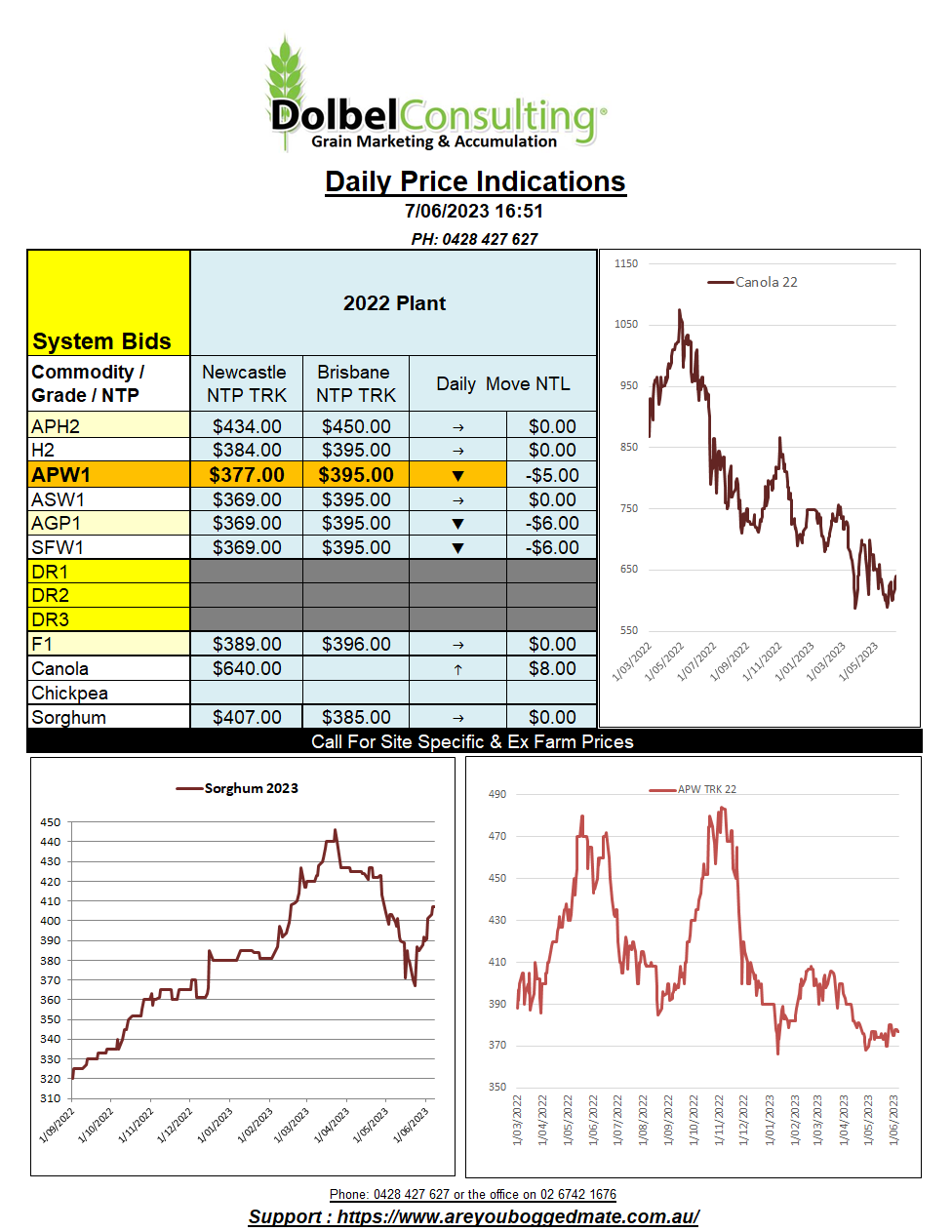7/6/23 Prices

I was reading reports on the destruction of the Nova Kakhovka Dam on the lower Dnieper River in the Kerson district of Ukraine. The first report I read said that Ukraine had blown it up to disrupt water supply to Crimea and flood Russian military camps on islands along the lower reaches of the river prior to its entry into the Black Sea. The next report I read said the Russians had blown it up.
Either way the destruction of the dam, according to many market wires last night, was a definite sign of an increase in the conflict and a black mark against any extension in the Black Sea grain corridor. This morning US markets appear more interested in the slight increase in the G/E rating of the US wheat crop and the better sowing pace of Canadian spring wheat than a possible delay in wheat exports out of the Black Sea.
The dry weather in the US is keeping the corn market alive at Chicago. The December wheat / corn spread is 117.25c/bu, so plenty more room for upside in US corn futures, but the 7-day forecast for the central corn belt is improving and heat is expected to stay away until the rain arrives.
Weather across northern Kazakhstan and the spring wheat regions of Russia has been less than ideal over the last couple of weeks. The dry weather has allowed spring wheat sowing to progress quickly though. Russia now increasing the estimated area sown to spring wheat. Without rain in the short term, the area sown will become irrelevant though. Temperatures in the region have also been very high, with much of central and northern Kazakhstan seeing the mercury push north of 38C this week. Towards the border with Russia in the west, temperatures have been high but not as high as the NE borders.
Rainfall across the lower reaches of the Don River in southern Russia, around Rostov, has been excessive with 75 – 125mm falling in the last couple of weeks. Heavy rain also remains a problem for China for their major wheat growing provinces of Henan, Hubei and west into the Upper Yangtze valley.
